Volume 7 | Number 4 | November 2015
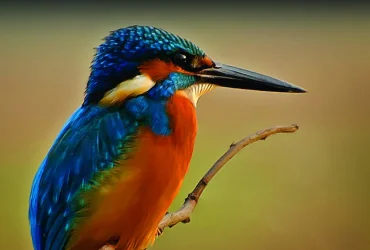 v7i4.208
v7i4.208ISSN: 1800-427X (print)
eISSN: 1800-427X (online)
DOI:10.47605/tapro.v7i4.208
Submitted date: 10 September 2014
Accepted date: 27 July 2015
Published date: 15 August 2015
Pp. 275–276.
THE MAN WHO LOVED ELEPHANTS AND STUDENTS: a tribute to Dr. Charles Santiapillai (1944–2014)
Sujan M. Henkanaththegedara & Upali S. Amarasinghe
*Corresponding author. E-mail:
He was a man who tirelessly worked to save elephants; He was a man who truly loved his profession, students and fellow colleagues; He was a man who has provided a great role model for budding scientists with continuous guidance and encouragement. More importantly, he was a kind and honest human being, who always tried to help and cheer fellow human beings. Dr. Charles Santiapillai, a world-renowned conservation biologist, passed away on the 29th October, 2014 peacefully amongst family at home in Kandy, Sri Lanka. He is a pioneering wildlife biologist who worked for the conservation of Asian elephants. His monumental work “The Asian Elephant: An Action Plan for its Conservation” captures his lifelong dedication for elephant conservation and sets the path not only for conservation of Asian elephants, but also for all large mammals in the brink of extinction.
eISSN: 1800-427X (online)
DOI:10.47605/tapro.v7i4.208
Submitted date: 10 September 2014
Accepted date: 27 July 2015
Published date: 15 August 2015
Pp. 275–276.
THE MAN WHO LOVED ELEPHANTS AND STUDENTS: a tribute to Dr. Charles Santiapillai (1944–2014)
Sujan M. Henkanaththegedara & Upali S. Amarasinghe
*Corresponding author. E-mail:
He was a man who tirelessly worked to save elephants; He was a man who truly loved his profession, students and fellow colleagues; He was a man who has provided a great role model for budding scientists with continuous guidance and encouragement. More importantly, he was a kind and honest human being, who always tried to help and cheer fellow human beings. Dr. Charles Santiapillai, a world-renowned conservation biologist, passed away on the 29th October, 2014 peacefully amongst family at home in Kandy, Sri Lanka. He is a pioneering wildlife biologist who worked for the conservation of Asian elephants. His monumental work “The Asian Elephant: An Action Plan for its Conservation” captures his lifelong dedication for elephant conservation and sets the path not only for conservation of Asian elephants, but also for all large mammals in the brink of extinction.
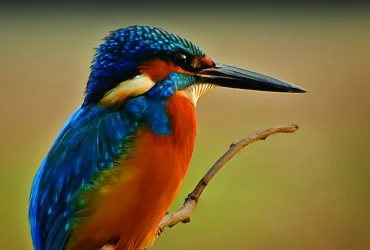 v7i4.207
v7i4.207ISSN: 1800-427X (print)
eISSN: 1800-427X (online)
DOI:10.47605/tapro.v7i4.207
Submitted date: 10 September 2014
Accepted date: 27 July 2015
Published date: 15 August 2015
Pp. 272–274, Pls. 13–14.
On the distribution of the reticulated leaf-toed gecko (Hemidactylus reticulatus)
G.C. Kumar*, C. Srinivasulu & M. Seetharamaraju
*Corresponding author. E-mail: g.chethankumar@gmail.com
The genus Hemidactylus Oken, 1817, is a large, widely distributed genus belonging to the most speciose gekkonid lizard family in the world. The reticulated leaf-toed gecko Hemidactylus reticulatus Beddome, 1870 was first reported based on specimens collected from under stones on rocky ground in Kollegal (12°9'N, 77°6'E), Karnataka, India. The distribution range of this Indian endemic gecko is Andhra Pradesh, Karnataka, Kerala, Madhya Pradesh and Tamil Nadu. In this note, we present an updated distribution of H. reticulatus in Telangana and Andhra Pradesh, India based on our sightings and collection records.
Section Editor: John Rudge
eISSN: 1800-427X (online)
DOI:10.47605/tapro.v7i4.207
Submitted date: 10 September 2014
Accepted date: 27 July 2015
Published date: 15 August 2015
Pp. 272–274, Pls. 13–14.
On the distribution of the reticulated leaf-toed gecko (Hemidactylus reticulatus)
G.C. Kumar*, C. Srinivasulu & M. Seetharamaraju
*Corresponding author. E-mail: g.chethankumar@gmail.com
The genus Hemidactylus Oken, 1817, is a large, widely distributed genus belonging to the most speciose gekkonid lizard family in the world. The reticulated leaf-toed gecko Hemidactylus reticulatus Beddome, 1870 was first reported based on specimens collected from under stones on rocky ground in Kollegal (12°9'N, 77°6'E), Karnataka, India. The distribution range of this Indian endemic gecko is Andhra Pradesh, Karnataka, Kerala, Madhya Pradesh and Tamil Nadu. In this note, we present an updated distribution of H. reticulatus in Telangana and Andhra Pradesh, India based on our sightings and collection records.
Section Editor: John Rudge
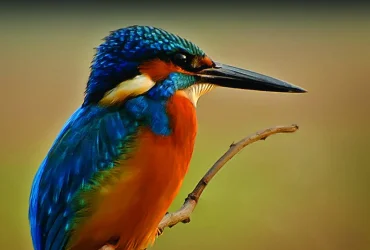 v7i4.206
v7i4.206ISSN: 1800-427X (print)
eISSN: 1800-427X (online)
DOI:10.47605/tapro.v7i4.206
Submitted date: 10 September 2014
Accepted date: 24 July 2015
Published date: 15 August 2015
Pp. 268–271.
Herpetofaunal richness in Lippakelle Tea Estate, Sri Lanka
J.D. Kottawa-Arachchi* & R.N. Gamage
*Corresponding author. E-mail: jeevank@tri.lk
Extensive studies on diversity and ecology of Sri Lankan herpetofauna have so far been conducted mostly in and around protected areas. Studies on fauna of economically important crop plantations such as tea, rubber, coconut, and some other commercial crops are limited and few studies have been conducted in tea plantations in up country, Sri Lanka. This study was undertaken to estimate herpetofaunal diversity and identify important habitats for herpetofauna in a tea plantation ecosystem in Sri Lanka.
Section Editor: John Rudge
eISSN: 1800-427X (online)
DOI:10.47605/tapro.v7i4.206
Submitted date: 10 September 2014
Accepted date: 24 July 2015
Published date: 15 August 2015
Pp. 268–271.
Herpetofaunal richness in Lippakelle Tea Estate, Sri Lanka
J.D. Kottawa-Arachchi* & R.N. Gamage
*Corresponding author. E-mail: jeevank@tri.lk
Extensive studies on diversity and ecology of Sri Lankan herpetofauna have so far been conducted mostly in and around protected areas. Studies on fauna of economically important crop plantations such as tea, rubber, coconut, and some other commercial crops are limited and few studies have been conducted in tea plantations in up country, Sri Lanka. This study was undertaken to estimate herpetofaunal diversity and identify important habitats for herpetofauna in a tea plantation ecosystem in Sri Lanka.
Section Editor: John Rudge
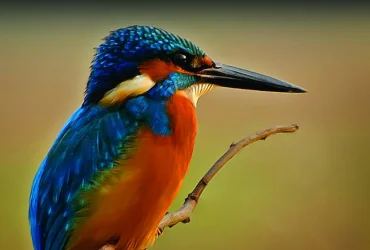 v7i4.205
v7i4.205ISSN: 1800-427X (print)
eISSN: 1800-427X (online)
DOI:10.47605/tapro.v7i4.205
Submitted date: 10 February 2015
Accepted date: 31 July 2015
Published date: 15 August 2015
Pp. 266–267, Pl. 12.
First record of Gynacantha millardi (Odonata: Aeshnidae) from Sri Lanka
T.M.T.S. Priyadarshana*, G.V.I.H. Wijewardana, N. van der Poorten & A.L.A.C. Jayasooriya
*Corresponding author. E-mail: tharakas.priyadarshana@gmail.com
Sri Lanka is a tropical island in the Indian Ocean, with a land area of 65,610 km2. In spite of its small size, the island has a variety of ecosystems with significant species diversity. There are 124 dragonfly and damselfly species identified from the island; 49.2% of them are endemic to Sri Lanka comprising 52 species and 9 subspecies. Although a listing of 124 species is substantial, not all species are common; some may be widespread and uncommon.
Section Editor: Jan van Tol
eISSN: 1800-427X (online)
DOI:10.47605/tapro.v7i4.205
Submitted date: 10 February 2015
Accepted date: 31 July 2015
Published date: 15 August 2015
Pp. 266–267, Pl. 12.
First record of Gynacantha millardi (Odonata: Aeshnidae) from Sri Lanka
T.M.T.S. Priyadarshana*, G.V.I.H. Wijewardana, N. van der Poorten & A.L.A.C. Jayasooriya
*Corresponding author. E-mail: tharakas.priyadarshana@gmail.com
Sri Lanka is a tropical island in the Indian Ocean, with a land area of 65,610 km2. In spite of its small size, the island has a variety of ecosystems with significant species diversity. There are 124 dragonfly and damselfly species identified from the island; 49.2% of them are endemic to Sri Lanka comprising 52 species and 9 subspecies. Although a listing of 124 species is substantial, not all species are common; some may be widespread and uncommon.
Section Editor: Jan van Tol
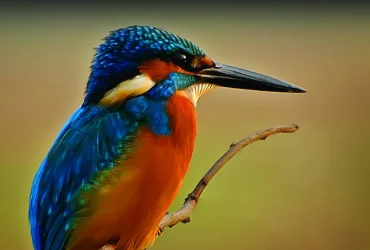 v7i4.204
v7i4.204ISSN: 1800-427X (print)
eISSN: 1800-427X (online)
DOI:10.47605/tapro.v7i4.204
Submitted date: 21 March 2015
Accepted date: 5 June 2015
Published date: 15 August 2015
Pp. 263–265.
A two-tailed Indian giant leaf-toed gecko (Hemidactylus giganteus)
G.C. Kumar* & C. Srinivasulu
*Corresponding author. E-mail: g.chethankumar@gmail.com
Tail autotomy is a common strategy for evading predators in lizards. It has been observed in 13 out of 20 lizard families. The ability to shed its tail increases a lizards chance of escape as the attention of the predator is drawn to the writhing or wriggling tail, while the lizard makes its escape. However, the loss of the tail can lead to a range of impacts on the lizard including a decrease in the lizard’s social status and increased vulnerability to predators in future.
Section Editor: John Rudge
eISSN: 1800-427X (online)
DOI:10.47605/tapro.v7i4.204
Submitted date: 21 March 2015
Accepted date: 5 June 2015
Published date: 15 August 2015
Pp. 263–265.
A two-tailed Indian giant leaf-toed gecko (Hemidactylus giganteus)
G.C. Kumar* & C. Srinivasulu
*Corresponding author. E-mail: g.chethankumar@gmail.com
Tail autotomy is a common strategy for evading predators in lizards. It has been observed in 13 out of 20 lizard families. The ability to shed its tail increases a lizards chance of escape as the attention of the predator is drawn to the writhing or wriggling tail, while the lizard makes its escape. However, the loss of the tail can lead to a range of impacts on the lizard including a decrease in the lizard’s social status and increased vulnerability to predators in future.
Section Editor: John Rudge
Hubungi Kami
The ultimate aim of the journal is to provide an effective medium for communication of the latest and best scientific information.
Copyright © 2020 Taprobanica. All Rights Reserved
Jasa Pembuatan Website by IKT




